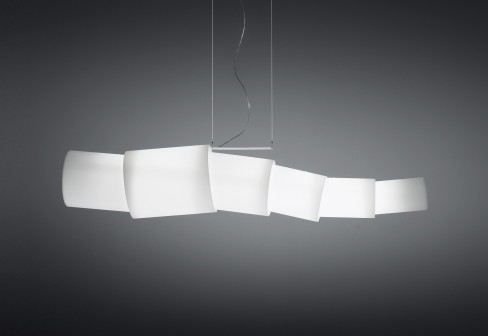Schwarz
View current page
...more recent posts
Just this weekend I was thinking about an old series of posts here, from 2007, in which I mused about the aesthetics of MySpace. At the time I was trying to figure out why something so “ugly” was also so popular, in an era of supposed mass-good-taste in design/aesthetics. Since then of course MySpace has become much less popular. Are aesthetics part of the reason?
Well before I could hash out an answer, I saw this Observer story with a totally different take. MySpace aesthetics connote the “vintage Internet.” Now that’s a great concept, the vintage Internet.
$84k 1773, 3br 2,032sf / 3200 S Delaware Dr (on the canal and river)
Easton, PA 18042
Everything you ever wanted to know about steam heating in one easy-to-understand book. There, that's as straight as I can put it. I spent five years researching Lost Art, and believe me, it was a labor of love. Those where the days when I first met the Dead Men. I found them waiting in old bookstores all across America. They sat on dusty shelves and called down to me. "Psst," they said. Up here! We've got a lot to tell you, kid."buy here
I read those books long into the night, night after night. I couldn't get enough of these stories of the days when central heating was new. I compared one book to another and marveled at how well the Dead Men explained themselves. I also watched as the systems changed over time, and as the theories sharpened themselves into well-accepted principles.
I remember reading a Dead Man's passage about steam pressure one day. He mentioned how systems work better when the pressure is kept low, and he explained why this is so. That passage was the key that allowed me to finally see what was going on within these old systems. So many of the other aspects fell into place that day, and I was finally able to sit down and write.
I wrote for a year, and then rewrote for another six months. I wanted Lost Art to sound like a conversation between you and me. Lost Art contains hundreds of drawings and photographs. In one chapter, "This Old Heating System", I catalogued and explained two dozen of the most common vapor/vacuum steam systems that the Dead Men installed between 1900 and 1930. These old systems were wonderfully simple, but you do need some guidance to get them working to their full potential. In this chapter you'll learn what to do, and what not to do.
The Special Anniversary Edition of The Lost Art of Steam Heating is 306 pages long. It measures 8-1/2" X 11", has a soft cover and a wonderful plastic spiral binding. You can fold it completely in half from any page, and it won't fall apart, even after years of use.
I've also added 10 pages of bonus material to this special edition, insights I've gained since the book first came out in 1992. Enjoy! back to top
jane avril jardin de paris
photo / study / poster the movie
Spike in baby dolphin deaths reported at Gulf beaches
/ 1st dolphin birthing season since BP oil spill
congratz tom moody ten years of blogging
electric bug conversions
just 16 (mm)
via afc fb
eleekinc cast bronze farm sink
via vz
water world floating condo
colorado mine style
sculpture habitable / andre bloc images
environmental art movement / fonction oblique / monolithes ou l'architecture en suspens / sculpture habitable Miguel Arruda
barney bubbles
via abaton fb
saul bass movie posters
artists in space
Art historian Svetlana Alpers traces the idea of the studio as a retreat from the world to early-Renaissance artist Piero della Francesca, painting his fresco cycle in the San Francesco basilica while on scaffolding. There, the artist—by necessity—created in isolation, literally above the masses. In late-twentieth-century Europe, the studio was a gathering place for artists in conversation, in apartments as ornately furnished and cluttered as any Victorian drawing room. Transplanted to America, the image of the great man alone in his large, empty warehouse dominated: Jackson Pollock in his barn is perhaps the prototype. Women in the studio mainly served as models, professor Mary Bergstein writes, "objectified as belonging to the artist's orbit of personal creations and possessions." More recently, Andy Warhol's Factory, postmodern critiques, and artist collectives have eroded the myth of the male genius working alone. In the 1970s, John Baldessari, who taught the legendary "Post-Studio Art" course at CalArts, quit traditional painting and said, "God forbid that it leaked out that [I] had a studio," demonstrating how outmoded the place had become. For today's transnational artist, writes art theorist Lane Relyea, the studio is little more than "a mailing address and a doorstep, thus providing the means for one to show up within the [global art] network."
harry bertoia bronze screen
alh for wsj / via a bit late

Container List is the blog of the Milton Glaser Design Study Center and Archives, featuring weekly graphics and ephemera from the design archives at the School of Visual Arts.
nice fake calder mobile in slide show frame # 2/7
Lawrence Weiner's house and studio
via chuck n fb
metal and wood cube tables at canvas
early coca-cola recipe gone viral
via adman fb
they're called grawlixes mother fuckers
This month, eight families from the Lafitte public housing development trundled their belongings into brand-new apartments in an instant neighborhood dubbed Faubourg Lafitte, erected on the site of the demolished brick complex in the 6th Ward.previous post
flora grubb gardens going vertical
more vertical gardens
Silver Lake’s Reservoir Of Black Balls Makes National Geographic
the current this old house build alerted me to this odd practice.
via reference library
you winsome your lose some.
so-cal e-rod
Au revoir Janette Laverrière
use value
G: An Avant-Garde Journal of Art, Architecture, Design, and Film, 1923-1926
via hyperion fb
roseto pa house and garage $159.9k 5,076 sf
pics
1949 Buick Roadmaster Sedanette
feldenkrais method
kubrick boxes
via vz
When Ken Bradshaw caught the largest wave ever surfed, in 1998, he was riding on pure, single-minded passion. But that same quality—plus a deep antipathy to hype—has put him at odds with the increasingly crowded, commercialized world of big-wave surfing. On Oahu’s famed North Shore, the author learns about the 58-year-old maverick’s record-breaking encounter with 85 feet of “Condition Black” water, the battles he still fights, and his unlikely friendship with the publicity-loving Mark Foo, who was killed on a wave he “stole” from Bradshaw.

Prints from Basil Besler's
Hortus Eystettensis [1613]
via antiques road show / wikipedia entry
teen a go go / fort worth tx '60s teen scene documentary
live edge table, metal legs
In the twenty-first century, we must learn to look at cities not as skylines but as brandscapes, and at buildings not as objects but as advertisements and destinations. In the experience economy, experience itself has become the product: we're no longer consuming objects but sensations, even lifestyles. In the new environment of brandscapes, buildings are not about where we work and live but who we imagine ourselves to be. In Brandscapes, Anna Klingmann looks critically at the controversial practice of branding by examining its benefits, and considering the damage it may do.
Klingmann argues that architecture can use the concepts and methods of branding-not as a quick-and-easy selling tool for architects but as a strategic tool for economic and cultural transformation. Branding in architecture means the expression of identity, whether of an enterprise or a city; New York, Bilbao, and Shanghai have used architecture to enhance their images, generate economic growth, and elevate their positions in the global village. Klingmann looks at different kinds of brandscaping today, from Disneyland, Las Vegas, and Times Square-prototypes and case studies in branding-to Prada's superstar-architect-designed shopping epicenters and the banalities of Niketown.In the twent
A Landscape Manifesto
The closest we have come to a sustainability orthodoxy is the "cradle to cradle" solution pioneered by Michael Braungart and William McDonough. According to their mantra, products need to be made fully recyclable so that, once they are discarded, each part can be turned back into itself again. The problem with that logic is that it promises infinite consumption with impunity. Businesses must love it. The drawback of putting so much emphasis on recycling, however, is that it makes us feel virtuous about throwing things away. Disposability – along with its henchman, planned obsolescence – is the real enemy.
The answer, it seems to me, is to buy fewer things that we value more: to design products that endure and that we can repair more cheaply than replace. And the real way to win the public over to sustainable design is not with a war of words but by tapping into their desires. We want things with sex appeal, not ones that look as though they are made of Weetabix.
To return to our "sustainist" authors, it's telling that they frequently square up to the futurist manifesto of 1909, setting themselves in opposition. They are right, of course. The futurists' machine-lust and speed greed are absurdly unhelpful in our age – too aggressive, too self-destructive. But Marinetti's screed had a libidinous energy that was never matched in any of the successive manifestos of the 20th century. At one point in his delirious fantasy on mechanisation, he and his futurist chums see some cars. "We went up to the three snorting machines to caress their breasts," he writes. Perhaps the sustainists could use a shot of whatever Marinetti was drinking.
Unseeing Modernism: Ezra Stoller at Yossi Milo Gallery
old tools tap and die
snow load building collapse
U.S. District Judge Carl Barbier said claims czar Ken Feinberg and any of his agents must change the way they communicate with people seeking money from the fund. The ruling came just hours after Feinberg released details on how final payments would be determined.
The ruling cuts at the heart of one of Feinberg's central arguments that because he's independent, thousands of people who have been denied money or received less than they feel they deserve should trust his decisions. And it could prompt more people to sue rather than accept relatively quick settlements with the fund, raising the potential for further uncertainty and liability for BP.
Barbier said Feinberg must clearly disclose in all communications that he is acting for and on behalf of BP in fulfilling its obligations as the responsible party under the Oil Pollution Act.
However, Barbier stopped short of ordering changes to a release form people who accept final payments from the fund must sign. He asked lawyers to submit additional briefs to the court on that, as well as address the question of whether BP is fully complying with the law in the processing of claims.
Noto, Suspension Light from Artemide
via materials and sources
Janis has a baglady's compulsion to carry her whole life with her [in her purse]. There are: two movie stubs, a pack of cigarettes, an antique cigarette holder, several motel and hotel room keys, a box of Kleenex, a compact and various make up cases (in addition to a bunch of eyebrow pencils held together with a rubber band), an address book, dozens of bits of paper, business cards, match box covers with phone numbers written in near-legible barroom scrawls, guitar picks, a bottle of Southern Comfort (empty), a hip flask, an opened package of complementary macadamia nuts from American Airlines, cassettes of Johnny Cash and Otis Redding, gum, sunglasses, credit cards, aspirin, assorted pens and writing pad, a corkscrew, an alarm clock, a copy of Time, and two hefty books-Nancy Milford's biography of Zelda Fitzgerald and Thomas Wolfe's Look Homeward, Angel."
Here's a quick look at a forthcoming paper in Environmental Science and Technology on the fate of BP's dispersants. As you may recall, BP loosed ~2.1 million gallons of chemical dispersants—1.4 million gallons to the surface and 0.77 million gallons into deepwater at the wellhead—in an attempt to break the oil into small droplets.
With its imposing black high-rises framing Alexander Calder’s bright red “Flamingo” sculpture (left), the Chicago Federal Center is one of the nation’s pre-eminent ensembles of mid-20th Century modernism. Yet for all its steely grandeur, the complex has woven itself into the life of its rambunctious city.
Loop office workers flock to the center’s farmers markets, just as reporters gather like hawks whenever a major trial is underway in the center’s Dirksen courthouse building. For years, last-minute tax filers have streamed to the center’s low-slung post office, which was designed, like the rest of the complex, by Ludwig Mies van der Rohe. The center, which lines Dearborn Street in the South Loop, was completed in 1975, though it has since expanded.
Now, with little fanfare, the federal government is pouring more than a quarter of a billion dollars into four projects that seek to replace failing mechanical systems, make the center more energy-efficient, reduce maintenance costs, renovate the center's elegant but aging plaza and further expand the complex into a former department store along neighboring State Street. Three of the four projects are backed by the federal stimulus program, accounting for $155 million of the overall $276 million cost. The Dirksen building rehab was funded separately from the controversial program.
who is bozo texino?
more via vz


